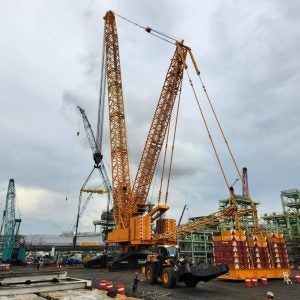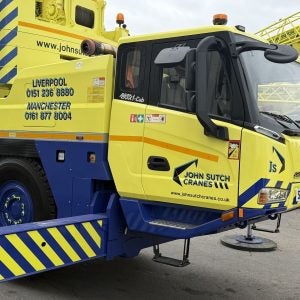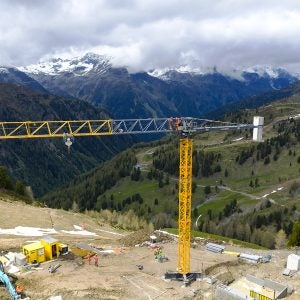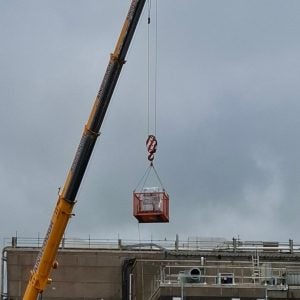Klaus Meissner, Terex-Demag’s technical director, added that one of the biggest driving forces behind the company’s business is the increasing demand for energy, including gas, oil, nuclear, water, solar, and wind.
Knecht and Meissner gave details of the upgrades at the company’s Saarbrücken, Germany facility. The presentation culminated in the introduction of a new crane – the CC 5800, designed is to fill the 1,000t capacity gap in its crawler range (see box).
Knecht said the CC 2400 – a 400t crane with a 3m wide boom and 5,170tm load moment – was scheduled for launch in the Spring.
Two developments of the CC 2800 crawler were announced. The CC 2800-1 NT is a narrow track version of the 600t lifting capacity CC 2800 designed to travel down narrow roads, especially for windmill erection.
Meissner explained: “We have introduced a special carbody to which the crawlers are connected. The side outriggers can be folded up so that when you have to travel between two obstacles you can lift up these outriggers. The articulated outrigger can fold beside the crane to reduce the transport width significantly to 5.2m, and we can travel in confined workspaces.”
Meanwhile, the company has added the “S7” power kit for the boom in the CC 2800-1 S7. Meissner again: “We have increased the capacity by adding stronger segments to the boom of the crane because these are the sections that are highly loaded. We can add up to four sections to the crane. This increases capacities; the standard crane stops at 126m, and now we can go for 138m.”
Terex has sold 10 CC 8800 units, but believes there will be significant demand for higher capacities. It is therefore working on a CC 8800 upgrade to increase the maximum capacity by 350t to 1,600t, and the load moment to 23,500tm.
The new CC 8800 twin, meanwhile, will have a twin boom and special counterweight system, increasing capacity from 1,250t to 2,500t, and the maximum load moment to 34,000tm. The carbody is strengthened and the crawlers are lengthened to 3.5m each by inserting additional sections, and the crane can perform pick and carry duties.
Meissner again: “We keep the standard carbody for the carrier, and add parts to it to increase the width. The upper section is also modified with a new superstructure frame able to carry the two booms so it is a system that uses existing parts combined with new parts to increase capacity for the future in the petrochemical industry.”
Traditionally, he said, this type of work was done by ringer cranes, which cannot move on site. “One more attractive feature to the twin boom system is that the crane can walk on site with two superlift counterweight cars. We are working on improving the superlift system still further.”
Terex is also working on a reinforced boom system to bring its CC 12600 up to 2,000t capacity and 40,000tm of load moment. The upgraded crane will be called the CC 12800. It will employ a containerised power pack system similar to the 8800 to reduce superstructure weight, and to ease transportation and mobilisation of the crane and the maximum load will be 2,000t.






